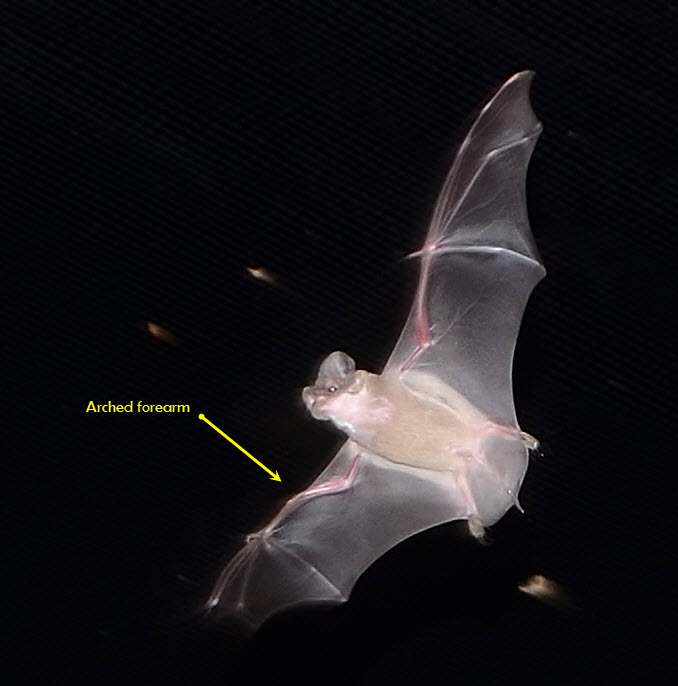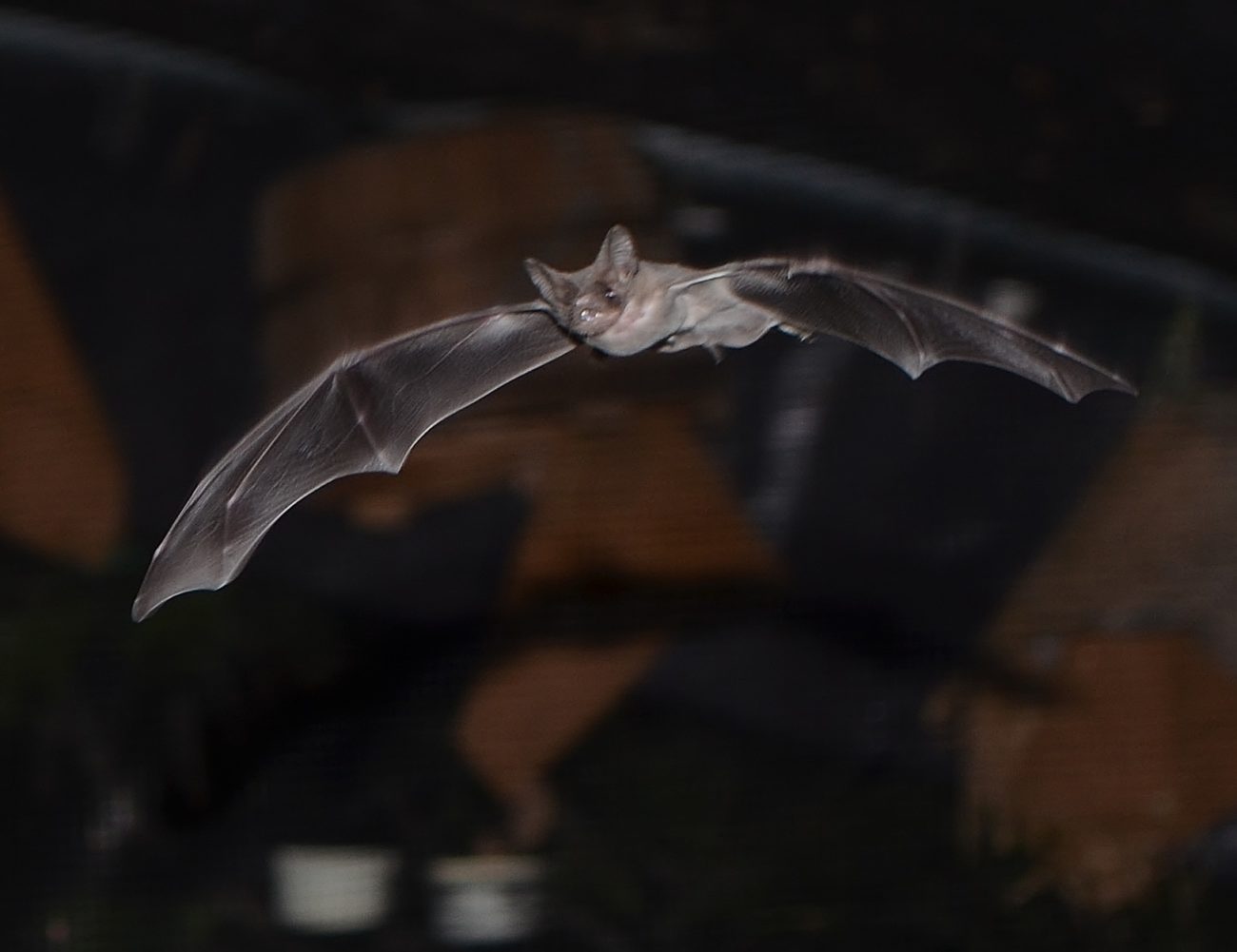Cold Front!
Cold front – Snuggle Up! Free-tails don’t have any problem snuggling up to big ol’ yellow bats. Even when pups, we sometimes find single freebies right in the middle of a clump of yellow siblings.

Cold front – Snuggle Up! Free-tails don’t have any problem snuggling up to big ol’ yellow bats. Even when pups, we sometimes find single freebies right in the middle of a clump of yellow siblings.

This eastern screech was so focused on our bats, that he allowed us to approach to within 6 feet before finally flying off! The rehabilitating bats are working on their flight skills and for that reason, they attract even more attention from local owls.
Our Mexican free-tail Bernie has a permanently injured wrist but was roaming the flight cage last night. But for the netting, he would have been scooped up in an instant by this owl.

This free-tail is so happy to be flying again and catching moths around the blacklight!
Soon to be back in the wild skies.
Just look at that smile!
Here’s an angle rarely seen of a Mexican free-tailed bat. If you look closely you can see the long “whisker” hairs sticking out between the toes. “Kind of like you honey” a bridge visitor said to his girlfriend this summer, right before she hit him, hard.
Congress Ave Bridge bats on the full moon
CAB bats head out to forage in the pasture land and agricultural fields between Bastrop and San Marcos on a full moon night.
They don’t seem to be deterred by the full moon, they are flying in big numbers even as the moon rises, although more seem to be staying within the city limits than usual.
One would think that Mexican free-tails would be lunar phyllic, since they feed in wide open spaces away from tree-loving owls and the moonlight might even allow them to better locate prey visually, before kicking in their echolocation when they get within range.
At this time of year (even on a wet year like this one) there is likely less insect prey in the agricultural fields and the bats are eagerly awaiting the reverse migration of the Corn Ear-worm Moth that usually starts in late September. CEM return south in the fall because their pupae can’t overwinter up north. Mexican free-tailed bats depend on this reverse moth migration to put on weight prior to the bats’ own migration south in late October.

Mexican free-tailed bats are built for speed. Their long narrow wings are just one of the adaptations that rank them among the fastest bats.
They are, however, also remarkably agile in tight spaces. They use bone structure and muscle fibers to change their wing aspect ratio to short and broad, allowing high maneuverability when necessary.

This Mexican free-tailed pup was found 17July2016 under Congress Ave Bridge. This was the first day the skypuppies took flight this year and it seems a mid-air collision grounded him on the footpath. Bat watchers correctly refrained from handling him and when they alerted us, we brought him back to our facility for care. We discovered that his forearm was curved in a manner reminiscent of the arches of the bridge, so of course he was named Archie and we expected he would likely not become volant. To our delight, he was not to be denied the joys of flight! We left his pup tent open to the flight cage and he bravely joined all of this year’s pups in the aerial circus that resembles a nightly fighter jet dogfight. He also flits around in the afternoon gliding like a butterfly before cleverly finding his way back to the pup tent for snacks!
We will closely monitor his skills to see if he is up to the fall migration, if not he’ll stay with us and enjoy hunting moths in the bat garden. Good pup Archie!

This bat had fallen into a back-porch bucket during all the rains last week. She managed to tread water ’till morning, when Matt & Christina found her and rescued her. We made sure her thumb claws were not damaged (luckily it was a plastic bucket), and then brought her out to the flight cage to make sure she could sustain flight. We tried a non-toxic tempura paint to ID her (it’s messy if they struggle and swat the paint brush) and you can still see a hint of red on her left ear as she is released back into the wild. Good bat, nice knowing you!

Elise found this pup on her doormat back of 18 July 2016 and, being the kind-hearted person she is, took the time to carefully contain the pup in a box (without touching it!) and call us. He was a very young juvenile who seemed to have let go of his bridge roost before he was quite ready. After weeks of blended mealworm dinners he was finally doing the wing stretches and one-arm pushups that let us know he’s ready to try again. So last night we brought him out to the aviary and after just a little encouragement, he took off and flutter-puttered all around the cage till we lost track of him in the darkness.
It’s really surprising just how slow the pups are when they first take flight. They have a puppy-like appearance with their little ears sticking straight up and a slightly alarmed expression on their faces. It’s so great to see them slowly gain confidence and soon start to shred the enclosure!
Thanks Elise! You’re simple act of kindness meant a lot to us, but it meant the world to this pup.

Elise’s pup
